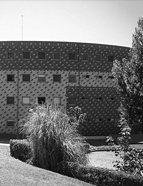

Much was expected of this generation. Let us consider the sequence, by areas of research and teaching.
As already mentioned, History of Art and Archaeology had already embarked on a process of autonomisation which converted them into variants of the degree course in 1981. Later, in the second half of the 1990s, these areas, plus Museology and Documentation Science, would give rise to the Department of Heritage Sciences and Techniques (DCTP), with its own degrees, master's degrees and doctorates.
At the historical and artistic level, the following may be highlighted: the continued attention paid by the late Carlos Alberto Ferreira de Almeida to Romanesque architecture and the popular cultures of the Entre-Douro-e-Minho [Beween the Douro and Minho] region; his continuator, Lúcia Rosas (b. 1957) would devote herself to the study of the restoration of Romanesque buildings in the late 19th century / early 20th century over a long period of time; Natália Marinho Ferreira-Alves and Joaquim Jaime Ferreira-Alves, disciples of José António Ferreira de Almeida, would distinguish themselves - even in the creation of the School - respectively in their approach to Baroque carving and 18th century urbanism; Fausto Sanches Martins would emerge from the teaching of Natália Marinho as a scholar of Mannerism in architecture linked to the Society of Jesus; and, in relation to several features of 19th and 20th century painting and architecture, the names of Agostinho Araújo and António Cardoso de Carvalho (b. 1932) are also noteworthy, the latter a disciple of José-Augusto França.
In Archaeology, a twofold trend: a continuity of the approaches to the Northwest Portuguese hillforts culture, a field initiated by Carlos Alberto Ferreira de Almeida as early as the 1960s and continued by Armando Coelho Ferreira da Silva (also an epigraphist, Sanfins scholar, director of the respective museum since the 1980s; within the scope of a «conciliation of Archaeologies», theorized in the 90s by Jorge de Alarcão, Armando Silva clearly represented a safe asset of a historical and cultural Archaeology, which in his case also involved a solid background in the field of Historical Linguistics), by Rui Centeno (one of the rare cultivators of Roman Numismatics in recent decades), by Teresa Soeiro (who would shift predominantly to Industrial Archaeology in the 90s) and by Carlos Brochado de Almeida (scholar of the Alto-Minho hillforts);
